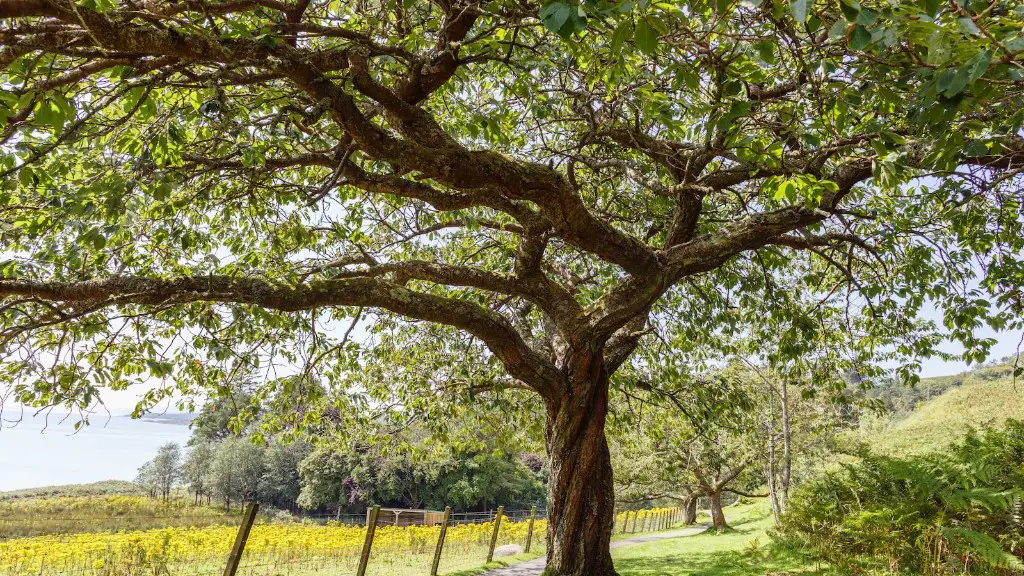Cherry blossom trees are popular trees in Japan. The blooming of the trees has become an important part of the culture, with families often taking trips to Japan for their own version of ‘hanami’, a traditional cherry blossom viewing celebration. Growing your own cherry blossom tree in your own home however, can provide you with a special and unique experience that you can enjoy every year. Here we will examine the various steps and techniques to successfully grow a Japanese cherry blossom tree from seed.
The first step is to acquire the Japanese cherry blossom tree seeds. Your local gardening store or nurseries can often provide you with the necessary seeds, or online stores can be used as an alternative. When selecting your seeds, make sure to read the instructions on the seed package to find out when the best time is to start planting the seeds. Japanese cherry blossom trees are typically planted in the late fall or early winter, since they will bloom during the spring.
Once you have acquired the seeds, you should prepare the soil for planting. The soil should be well-drained as well as nutrient-rich, and it should not be too wet or dry. To ensure that you have an ideal soil, you should mix in a few inches of organic compost into the soil before planting your cherry blossom tree seeds. Make sure that the soil is evenly moist, not too wet and not too dry.
Once the soil is prepared, you should plant the Japanese cherry blossom tree seeds. Plant the seeds at a depth of one-half to one inch and water thoroughly after planting. Japanese cherry blossom trees do not require a lot of sunlight and can do well even with slight shade; furthermore, they can survive in temperatures as low as -10 degrees. After planting the seeds, you should provide constant but moderate watering for about two to three weeks until the roots are established.
After two to three weeks, the cherry blossom tree should be able to survive on its own, with minimal maintenance. However, provide it with some nutrition. Apply a liquid fertilizer every three to four weeks, as this will provide your tree with the necessary nutrients required for strong, healthy growth. As the cherry blossom tree grows and matures, you will need to prune it periodically; the best time to do this is in the winter when the tree is dormant.
Once the tree matures, it should begin to bloom in the spring or summer months, depending on the variety of tree. You should be able to enjoy a beautiful display of pink and white flowers. It is important to remember that Japanese cherry blossom trees are short-lived trees, they will only live for about ten to twenty years. Therefore, it’s important to enjoy the tree while it’s in bloom.
Soil pH Requirements for Growing the Tree
Cherry blossom trees prefer an acidic soil with a pH level of 5.5 to 6. This can be achieved by adding sulfur, iron sulfate, sphagnum peat moss, or compost to the existing soil. It is important to regularly test the soil pH levels as this will help ensure optimal growth of your tree.
Propagating the Tree
Propagation of cherry blossom trees can be done either through seed or vegetative propagation (cuttings or divisions). When propagating through seed, you should make sure that the seeds are mature and free of any diseases or pests. Plant the seeds at a depth of one-half to one inch in a nutrient-rich, well-drained soil and water thoroughly after planting. It is important to provide the seedlings with adequate moisture and nutrition as they develop.
Propagation through cuttings or divisions is simpler and less time consuming. It involves taking a branch from the parent plant and planting it in a pot of potting mix so that it can develop roots. The process is known as air layering, which involves wounding the stem of the tree, and then applying a rooting hormone and a plastic wrap to the stem so that the new roots can grow. For maximum success, the plant should be regularly watered, and it should be in a warm and humid place.
Caring for the Mature Tree
Once the tree has reached maturity, it should be regularly inspected for diseases and pests. The tree should never be allowed to suffer from drought and should be watered on a regular basis, particularly during periods of drought or hot weather. Mulching with organic materials is also recommended as it will provide additional nutrients to the tree. Cherry blossom trees can also benefit from a few inches of compost or manure each year, as this will help the tree stay healthy and vibrant.
Pruning the Tree
Pruning is essential to keep the tree healthy and to encourage blooming. This should be done in early spring and late fall. Pruning will help to reduce the size of the tree and promote new growth. It is also important to prune any dead wood, diseased wood, or infested wood. Additionally, pruning will help keep the tree in proportion and in line with the desired shape.
Fertilizing the Tree
Fertilizing your tree is essential for healthy growth and development. A slow-release fertilizer should be used in the early spring and late fall, and a foliar feed of liquid fertilizer can be applied during the growing season. A few tablespoons of a balanced fertilizer mix should be applied to the soil around the tree after watering. This will provide the tree with the essential nutrients it requires for healthy growth and blooming.
Protecting the Tree from Weather Extremes
Cherry blossom trees should be protected from extreme temperatures, both hot and cold. During the hot summer months, the tree should be sheltered from direct sunlight, as this can burn the leaves and damage the tree. During winter, the tree should be covered with burlap or a frost blanket to protect it from extreme cold. Additionally, it is important to apply a thick layer of mulch to the soil, as this will help insulate the roots from extreme temperatures.



